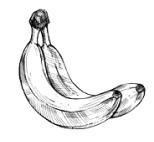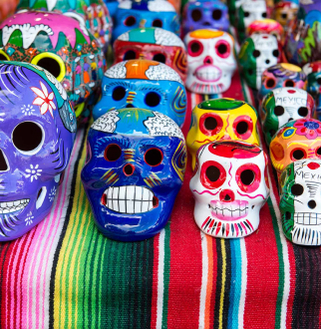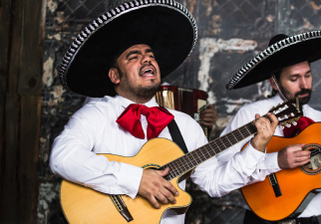Cultural industries
Latin American culture is the hallmark of the region. It was formed with the convergence of traditions and cultures not only of different peoples and races, but also of different civilizations, it is multifaceted, unique and leaves no one indifferent.
Music and dance - a separate direction «Latinos», has enriched the world culture. The dance in Latin America is a free-standing variation through which a Latino tells about everything in his life: loyalty, betrayal, love, loss, grief, pain and patriotism. Music uses unusual instruments, many of which date back to the reign of Indian tribes, making it original and unique.

The literature of Argentina, Colombia and Brazil is world-class, authors know, prose and poetry translated into all languages. There are six Nobel laureates among Latin American writers.
The architecture, visual and decorative arts of Latin America are of interest to amateurs, professionals, and collectors alike. It is remarkable for its originality and diversity, it is religious and secular, and has a deep history: it is the art of pre-Columbian America, the colonial period, the period of formation of nations at the turn of the XIX-XX centuries. and modern.
Latin American cuisine is at its peak. Latin American restaurants are in almost every city on the planet, they present traditional national dishes and drinks and bribe the crowd. Today, Latin cuisine is a gastronomic trend. In Europe and America, new Latin American restaurants are opening, which soar to the top ranking of the top 50 restaurants in the world. Latin American chefs give lessons and master classes around the world, and the world’s most fashionable chefs go to Latin America on gastronomic expeditions.
Cultural industries around the world have become an integral part of public economic policy. The world average contribution of cultural industries to GDP is 6.6%, in developed countries it is 8-12%, in Russia it is only 3%. Russia’s cultural cooperation with Latin American countries has great potential and could become a new growth point for cultural industries.
Tourism
On the other side of the land is the heat. There in winter, as in July in Russia, meadows bloom. The large territory of the continent is close to the equator, thanks to which the climate of Latin America is benign, with luxurious beaches and scenic landscapes. According to the Travel and Tourism Competitiveness Index (TTCI) of the Latin American countries in the first position on the criterion of natural resources and are in the top 30 on the World Heritage Sites. Latin America’s primacy in the ability to celebrate is undeniable. Carnivals of Latin America - a real riot of colors, tanned fun people, extravaganza of color, sound and magnificent mood, resulting in colorful processions around the cities. The most famous is the Brazilian carnival, but no less incendiary show takes place in Cuba and in Argentina, and in general the carnival is held in most countries of Latin America.
The tourism industry is the fastest growing in the region and has a high social importance. In most Latin American countries, revenues from the tourism sector account for 8-14% of GDP. Russia has a visa-free regime with most countries in the region. The share of Latin American countries in the overall tourist flow is still modest, but promising.
Natural resources and agriculture
Traditionally, Latin American economies are based on exports of raw materials and agricultural products. In doing so, each country specializes in exporting its raw materials and products on which its well-being depends. These industries account for 89% of trade between Russia and Latin America.
Latin America has virtually all known minerals. The most unusual combinations of minerals are found in relatively small territories.
Export of raw materials began from the time of the Spanish conquistadors and does not stop. 1st place in the world in silver mining is Mexico. Brazil is the second largest iron ore producer in the world. According to some sources, Venezuela ranks second in the world in terms of oil reserves, behind only Saudi Arabia. The world’s largest copper belt stretches along the Andes.
If we consider trade not only in mineral resources, but in total in chemical products, metals and metal products, the turnover of Russia and Latin American countries exceeds the data for agricultural products and is 48%.
The unique flora of Latin America has fundamentally changed agriculture and gastronomic habits of people all over the world. Latin America has given the world and Russia basic foods: potatoes, sunflower, beans and corn - foods that, in difficult times, saved many and more from starvation. Latin America is home to the usual tomatoes, avocados, chili and peppers, tobacco, peanuts, cocoa, vanilla and pineapples.
-
 20%de la producción mundial de tabaco
20%de la producción mundial de tabaco -
 30%de la cosecha mundial de plátanos
30%de la cosecha mundial de plátanos -
 60%de la cosecha global de café
60%de la cosecha global de café





